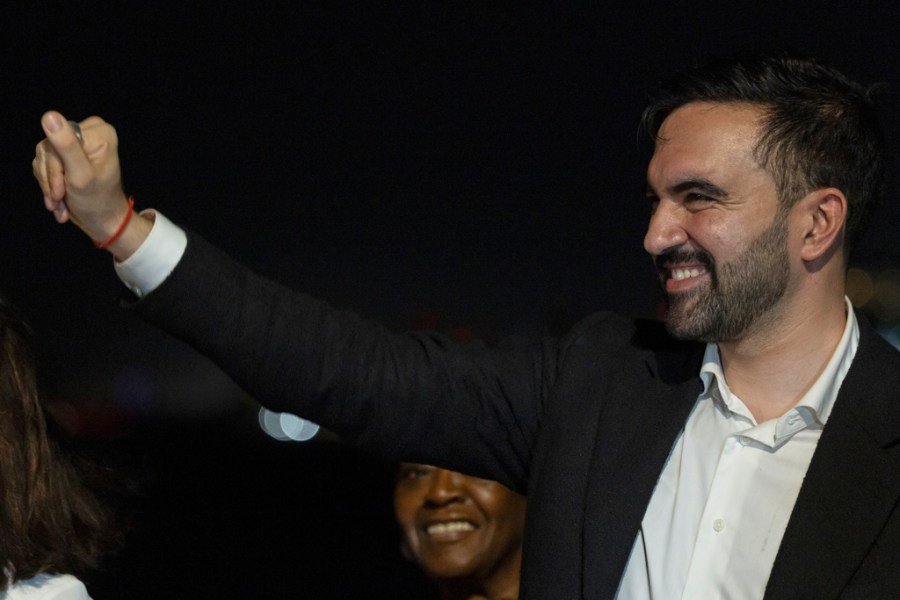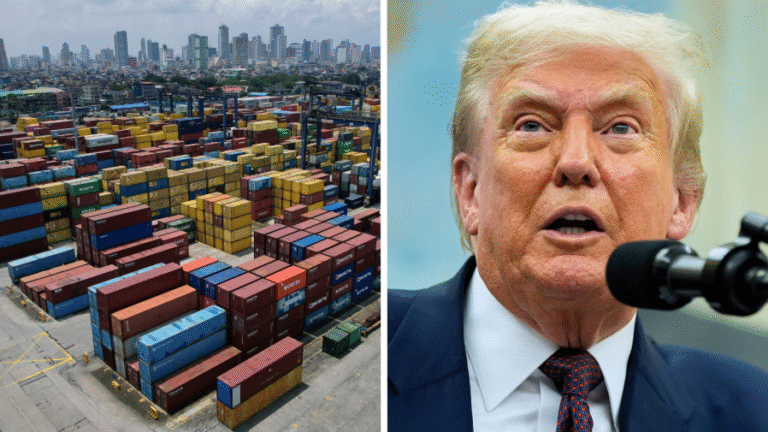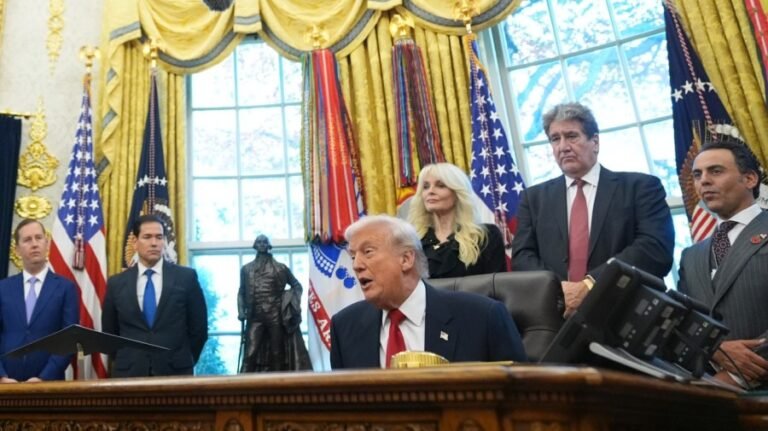
The 2025 election results provide clarity around the strength of the anti-Trump backlash taking place in this moment. They also illuminate a choice for Democrats going into 2026 and 2028: Should the party rely primarily on an anti-Trump message or use the energy of this moment to inspire voters with a bold economic vision voiced by authentic champions?
Consider this car analogy. Democrats have been sputtering on the side of the road, out of gas, for a while. Our popularity is down. The brand is very bad. President Trump basically gave Democrats a quarter-tank of gas, and on Tuesday night we rode it really fast from New York to New Jersey to Virginia to California. It felt great.
But it leaves us with a choice. Do Democrats ride out that gas and eventually sputter again when political times change — potentially losing to JD Vance or other authoritarian wannabes down the road? Or do we take this moment to refuel our popularity and build a durable coalition by campaigning on a vision that inspires voters for the long road ahead?
I talked to New York voters at their homes during Tuesday’s election and was yards away from Zohran Mamdani as he delivered his electric victory speech. The voters I spoke with and the volunteers I witnessed at the victory event were not just breathing a sigh of relief that we beat the bad guys. They were genuinely inspired by a vision. Young voters, working class voters, people from all races and walks of life — they were not “dragged to the polls” (common campaign parlance) but excited about the possibility of what victory meant for the future.
Mamdani was the only high-profile candidate to achieve that level of movement building. Anti-Trump backlash was so strong that it powered less inspiring candidates (like New Jersey Gov.-elect Mikie Sherrill (D), who hemmed and hawed for 18 seconds when asked her top priority) to large margins over their opponents. But the people who showed up for those candidates are largely not committed for the long haul. Boring candidates with no framework for seeing the world may keep Trump enablers out of power in the short term, but they do not put reputational fuel in the car of the Democratic Party to survive the long term.
Two recent election cycles show the risks of short-term thinking. In 2006, House Democrats (led by then-Rep. Rahm Emanuel (D-Ill.)) put their finger on the scale for milquetoast candidates over more inspiring candidates who could have otherwise won their primary and general elections. In Congress, many of those 2006 winners governed out of fear, took unpopular positions on health care that curried favor with Big Insurance and Big Pharma, and tied themselves in pretzels when talking about controversial issues.
Voters sensed weakness, and many of them were wiped out in 2010 when the political winds had changed. One exception was now-Minnesota Gov. Tim Walz (D), who won his House nomination in 2006 because his district was seen as so conservative that Emanuel did not pay attention to it. He won a top upset by stressing working-class, middle-class economic concerns and criticizing the Republican opponent for giving tax cuts to Wall Street. He built a durable reputation and survived in 2010.
In 2022, Democrats exceeded expectations and therefore learned all the wrong lessons. The biggest wrong lesson learned was by former President Joe Biden, who felt that a positive wind meant enduring popularity — and consequently decided to seek reelection. Other Democrats learned, incorrectly, that inflation was fine and voters’ economic concerns were not a political problem. They learned otherwise in 2024.
The 2026 election cycle provides a valuable opportunity for Democrats to avoid the mistakes of the past. Instead of coasting off of Tuesday’s positive wind, which came in the middle of a government shutdown that will be history in a year, Democrats should rally around candidates who have a bold economic populist vision that inspires a broad coalition in battleground areas.
2024 Nebraska Senate candidate and union leader Dan Osborn outperformed Kamala Harris by 14 points in a 20-point red state with a message challenging corporations on behalf of working people. He has built a movement that is sticking with him in his second run. Osborn raised $1.09 million in his latest campaign funding haul, while Republican Sen. Pete Ricketts raised $884,011.
Graham Platner, a Maine oyster farmer hoping to run against Republican Sen. Susan Collins (R), has raised grassroots donations while signing up thousands of volunteers. Even after a spate of negative stories planted by establishment operatives who fear his candidacy, hundreds of people pack into rooms day after day to hear his inspiring message on behalf of working people.
New York Times columnist Michelle Goldberg described Platner’s recent town hall in a town of about 2,300 people. “The parking lot was full and the street lined with cars. Volunteers were forced to turn people away. Inside, 200 folding chairs were taken, and hundreds of people stood packed together around the auditorium’s back and sides,” she wrote. One former mayor said this kind of crowd “just doesn’t happen” in politics.
The hundreds of local voters were not there because of President Trump. They were inspired by Platner’s message that typically doesn’t come from the mouths of establishment politicians. Democrats need to campaign on the “big, courageous, structural change that got us the best wins we’ve ever had, like Social Security, like Medicare, like Medicaid. If we want our party to be that again, we need to take it back. Nobody is coming to save us.”
In 2026, Democratic primary voters will be in the driver’s seat. They could turn the Democratic Party onto a road that starts off smooth and potentially ends with a cliff and a fall into future fascism. Or, they could refuel the party’s popularity by choosing vibrant economic populist candidates, relegate billionaires and the crusty political establishment to the rear-view mirror, and put a broad coalition of working people in the front seat. This decision will decide the future direction of our nation.
Adam Green is a Democratic strategist and co-founder of the Progressive Change Campaign Committee.


